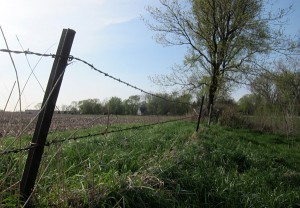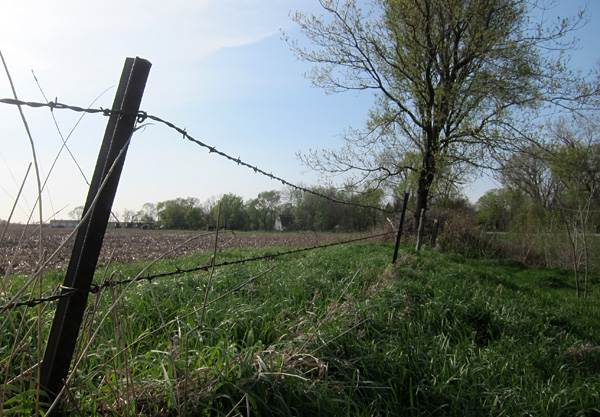
AMES, Iowa — Average Iowa farmland value is estimated to be $8,296 per acre, an increase of 23.7 percent from 2011, according to results of the Iowa Land Value Survey conducted in November. This is the third year in a row where values have increased more than 15 percent. The 2012 values are historical peaks.
See map which shows % increases from 2011to 2012.
The increase is somewhat higher than results of other recent surveys of Iowa farmland value: the Chicago Federal Reserve Bank estimated an 18 percent increase in Iowa land values from October 2011 to October 2012 and the Iowa Chapter of the Realtors Land Institute estimated a 7.7 percent increase from March to September 2012.
“The difference in survey estimates could be due to values increasing more rapidly in the past few months than earlier in the year. Better than expected crop yields and the level of land sale activity due to the proposed changes in land related taxes contributed to the increasing values,” said Mike Duffy, Iowa State University economics professor and extension farm management economist who conducts the survey. “The Iowa State survey samples different populations, and uses different wording than the other surveys. This could also lead to different results especially in times of uncertainty. Even within the Iowa State survey there was considerable variation in the estimates.”
O’Brien County had an estimated $12,862 average value, the highest average county value. O’Brien County also had the highest percentage increase and highest dollar increase in value, 35.2 percent and $3,348, respectively. Osceola, Dickinson and Lyon counties also saw 35.2 percent increases. The Northwest Crop Reporting District, which includes all four counties, reported the highest land values at $12,890, an increase of $3,241 (33.6 percent) from 2011.
“The 2012 land value survey covers one of the most remarkable years in Iowa land value history,” said Duffy. “This is the highest state value recorded by the survey, and the first time county averages have reached levels over $10,000. While this is an interesting time, there is considerable uncertainty surrounding future land values.”
Why Iowa farmland values are increasing
Duffy said understanding some of the causes for the current increase in farmland values is helpful in assessing the situation. Farmland values are highly correlated with farm income. As farm income increases, so will land values. In 2005, corn prices averaged $1.94 per bushel in Iowa. The preliminary estimated price for November 2012 is $6.80. Soybean prices changed from $5.54 to $13.70 over the same period. Coming into 2012 there was a general sentiment that prices would decline from their peaks. But, the drought changed this and the prices remained at high levels. How long the high prices will last is unknown.
There has been considerable variation in commodity prices over the past few years, but farm income has increased substantially. The Iowa State economist goes on to say, the increase in income has been the primary cause for the increase in farmland values, but not the only one.
“There are other causes for the increase,” Duffy said. “Interest rates are at the lowest level in recent memory. Farmland purchased by investors went from 18 percent in 1989 to 39 percent of purchases in 2005, but investor purchases are back to the 1989 level of 18 percent this year after decreasing for the third year in a row.”
Another key component is the costs of production. In the past, costs have risen in response to higher commodity prices. This is especially true for rents. Iowa State University estimated costs of crop production have shown a 61 percent increase in the cost per bushel since 2005. Without land, the increase has been 87 percent.
Duffy believes there is still discipline in the land market, while land values have increased 64 percent in the past three years, in 2009 values did decrease by 2.2 percent. Therefore, it is prudent to be mindful of the factors that influence land values. The economist said there are several key components to watch:
- Weather related problems – both here and around the world
- Government policies – especially policies related to estate and capital gains tax rates
- The amount of debt incurred with land acquisition
- What happens to input costs – land being the residual claimant to any excess profits in agriculture
- Government monetary policies as they relate to inflation and interest rates
- The performance of the U.S. economy and economies throughout the world – which impact commodity prices, which
- in turn impact land values
Overview of 2012 Iowa land values
While the highest county land values were reported in O’Brien County, Decatur County remained the lowest reported land value, $3,242 per acre, and the lowest dollar increase, $521. Keokuk and Washington Counties had the lowest percentage increase, 14.8 percent, with reported average values of $6,330 and $8,226, respectively.
Low grade land in the state averaged $5,119 per acre and showed a 20.2 percent increase or $862 per acre, while medium grade land averaged $7,773 per acre; high grade land averaged $10,181 per acre. The lowest land value was estimated in the South Central Crop Reporting District, $4,308, while the lowest percentage increase was in the Southeast Crop Reporting District with an 8.2 percent increase. The Northwest Crop Reporting District reported a 36.8 percent increase, the highest district percentage reported. Maps showing 2012 values, percentage change and comparisons to 2011 data and additional information from Duffy are available at www.extension.iastate.edu/topic/landvalue.
The Iowa Land Value Survey was initiated in 1941 and is sponsored by the Iowa Agriculture and Home Economics Experiment Station, Iowa State University. Only the state average and the district averages are based directly on the Iowa State survey data. The county estimates are derived using a procedure that combines survey results with data from the U.S. Census of Agriculture.
The survey is based on reports by licensed real estate brokers and selected individuals considered knowledgeable of land market conditions. The 2012 survey is based on 486 usable responses providing 663 county land value estimates. The survey is intended to provide information on general land value trends, geographical land price relationships and factors influencing the Iowa land market. It is not intended to provide an estimate for any particular piece of property.









